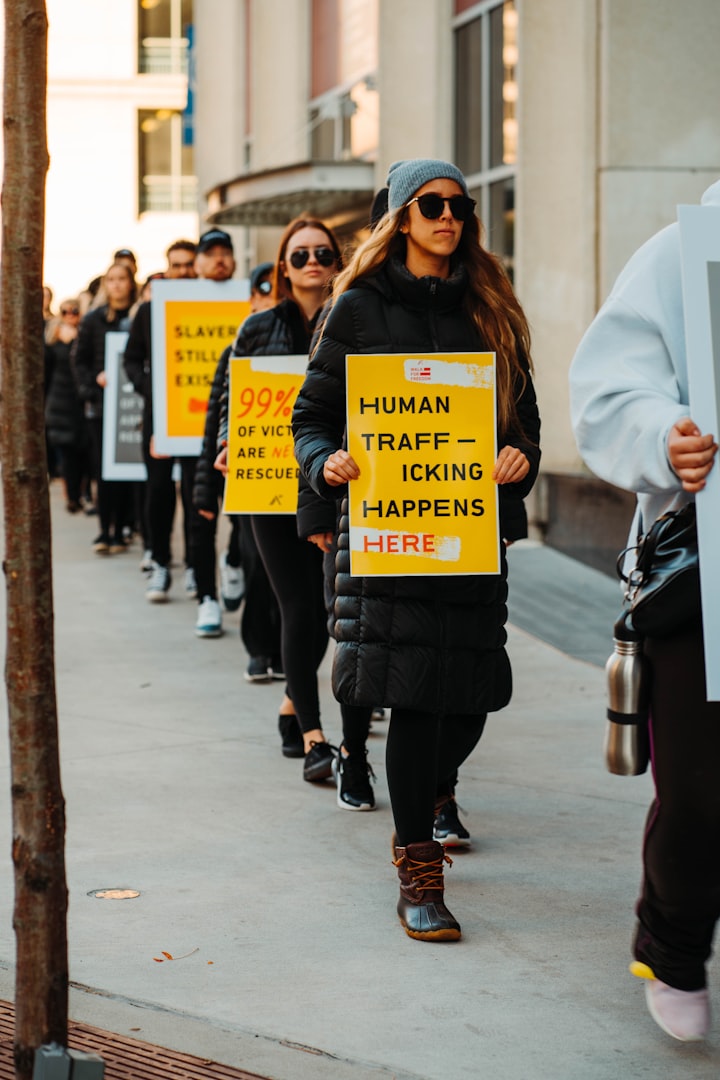
A few days ago, I posted a story about how the lives of John Quincy Adams and Abraham Lincoln intersected. Former President Adams exemplified a strong fervor to abolish slavery and Lincoln embraced Adams' dream. Under the Lincoln Administration in 1865, slavery was abolished. And though Adams died 20 years before his dream materialized, Adams' believed in his heart of hearts that one day, no man would own another.
I read the newly posted article to my wife and she asked the question, "So, what can we do to end slavery today?"
I know when people hear the word slavery, they think of America's harrowing past of slave ownership, especially in the deep South. However, slavery exists today all around the world, and one way that it thrives still in America is through human trafficking.
According to the Homeland Security website, human trafficking involves the use of force, fraud, or coercion to obtain some type of labor or commercial sex act. Every year, millions of people are trafficked around the globe, including in America. Sadly, one of the world's greatest sports spectacles becomes one of the largest venues for trafficking in the United States. Recent reports and dozens of news articles strongly point to the Super Bowl as the most prominent national event where sex trafficking flourishes, with estimates of as many as 10,000 victims flooding host cities to be offered to willing purchasers intent on buying sex.
So, back to my wife's question. "What can we do to end slavery?" Without being an expert on this topic, I rattled off some ways I though trafficking could be combatted in our corner of the world.

Raise Awareness
There may be many people unaware that human trafficking exists and takes place all around us, possibly right under our noses. According to Homeland Security, "It can happen in any community and victims can be any age, race, gender, or nationality. Traffickers might use violence, manipulation, or false promises of well-paying jobs or romantic relationships to lure victims into trafficking situations. Language barriers, fear of their traffickers, and/or fear of law enforcement frequently keep victims from seeking help, making human trafficking a hidden crime."
My family lives on the buckle of the "Bible Belt." There's a church on every corner and people feel relatively safe in our neck of the woods. But, just a few miles away in a neighboring city, we've heard rumors that human trafficking exists. A friend of ours occasionally counsels people rescued from this horrendous exploitation of humanity, and with the benefit of this first hand knowledge, we know to remain vigilant parents. We live on a quiet cul-de-sac, but we watch our youngest kids like hawks, knowing that every day in America children disappear. In many cases, they fall into the hands of traffickers.
Watch for the Signs
Human trafficking is often a hidden crime. Victims may be afraid to come forward and get help; they may be forced or coerced through threats or violence; they may fear retribution from traffickers, including danger to their families; and they may not be in possession of or have control of their identification documents. So, what do you look for? There are some human trafficking indicators. The following list comes from the U.S. State Department, and though not exhaustive, these are some key things to watch out for when you suspect someone is a victim of human trafficking.
Living with employer
Poor living conditions
Multiple people in cramped space
Inability to speak to individual alone
Answers appear to be scripted and rehearsed
Employer is holding identity documents
Signs of physical abuse
Submissive or fearful
Unpaid or paid very little
Under 18 and in prostitution
Other signs may include the potential victim appearing malnourished or avoiding eye contact. In other cases, the victims may work excessively long hours or check into hotels with older males, whom they call "daddy" which is often street slang for pimp. Now that we know about some of the warning signs, what can be done?

Get the Victim Help
When talking with my wife, I suggested finding people willing to aid victims that had "muscle." This comment came with little forethought of the possible consequences. If you believe you have identified someone in a trafficking situation, alert law enforcement. Don't try to play the part of hero. It may be unsafe to attempt to rescue a trafficking victim. The trafficker may be well armed and may hurt or kill both the rescuer and the victim. Call 911 and let the authorities take care of the confrontation. You might also consider calling the National Human Trafficking Hotline. The number to call is 1-888-373-7888.
A man named Cain once asked, "Am I my Brother's keeper?" The answer is 'yes!' The signs being held all say, "Human trafficking happens here." That shouldn't be the case. It shouldn't be happening anywhere, especially in the "land of the free and the home of the brave." We need to be alert. We need to be vigilant. We need to be willing to get involved to help those being brutalized in the trafficking world.
Who's with me?
About the Creator
Bryan R..
Husband. Father. Music and Youth Pastor. I enjoy writing as a hobby.






Comments
There are no comments for this story
Be the first to respond and start the conversation.